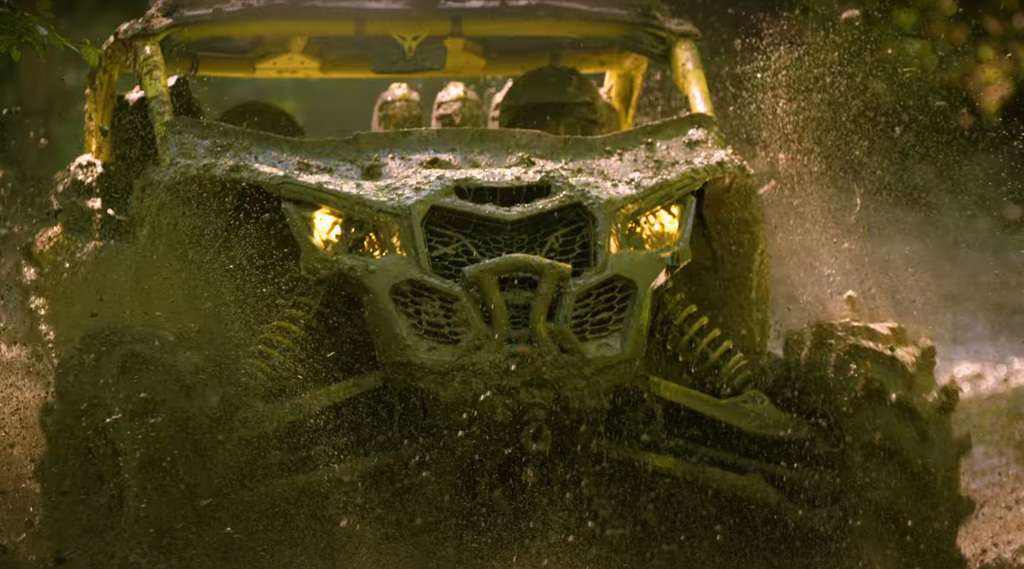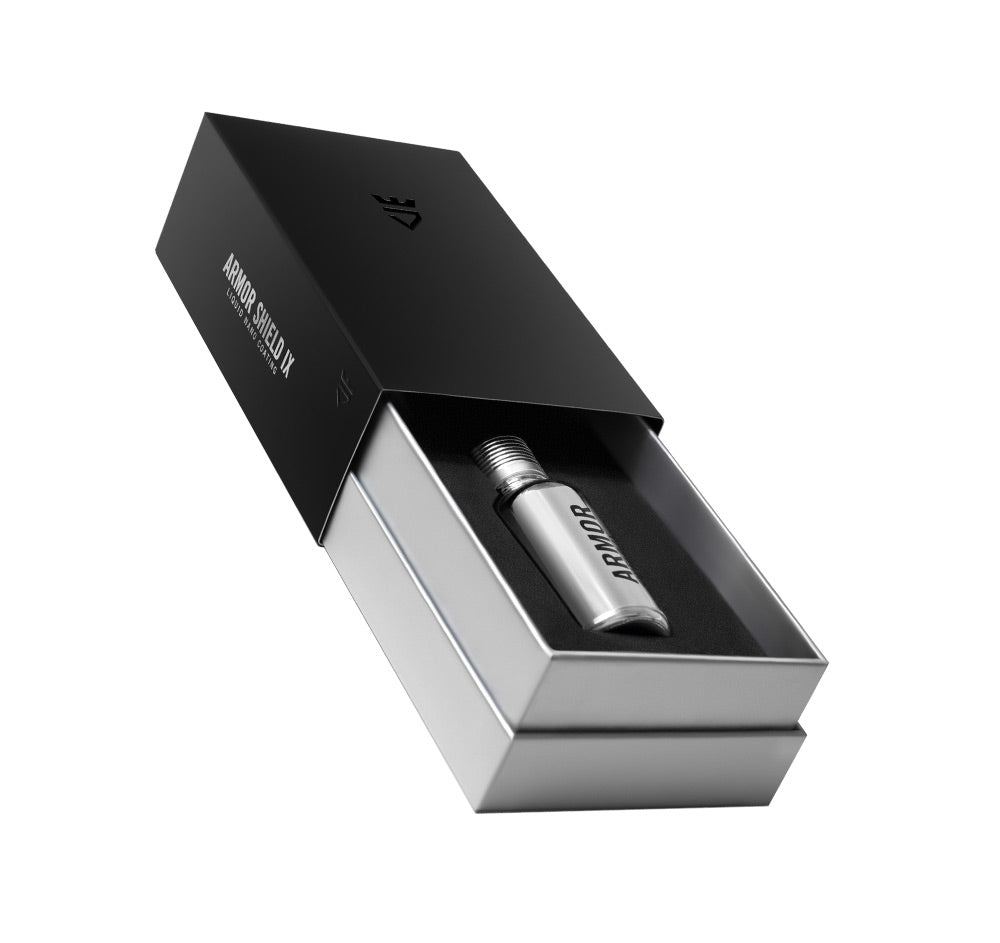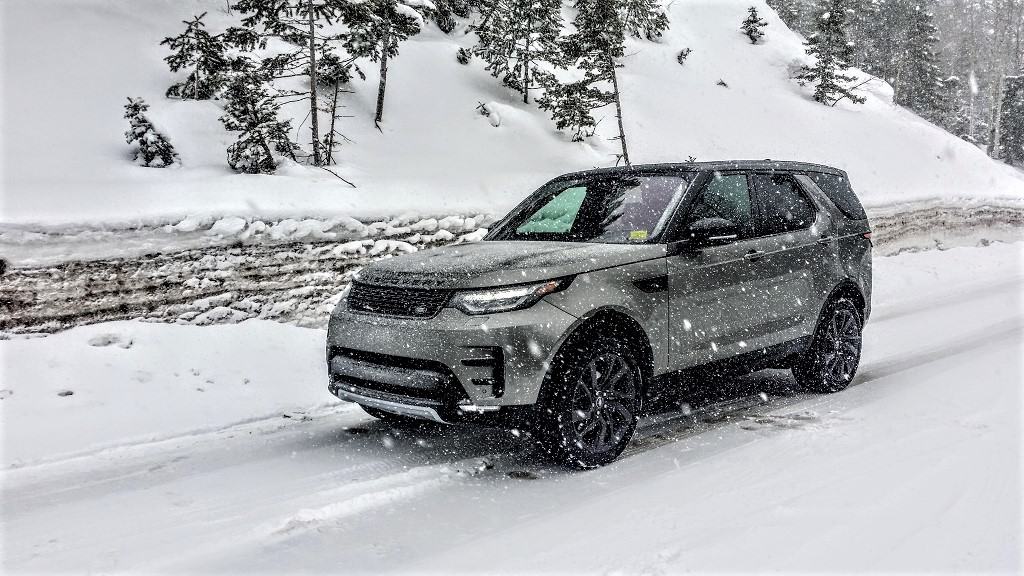There are literally thousands of miles of trails specifically designed for ATV and side-by-side vehicles in the United States of America. However, many of them are little more than massive, mosquito-filled mud pits, or stagnant, snaked-infested swamps. But these wretched pieces of real estate are also home to another kind of animal: Mud lovers.
Regardless as to whether it’s bouncing around a privately owned mud-filled bog in Florida, or exploring public lands set aside four 4-wheelers by the Bureau of Land Management, ATV mud-slinging in America remains a popular pastime.
But there’s a lot more to ATV and side-by-side mudding than just gassing-up and slogging down some slick trails. The appropriate gear must first be purchased in order to keep you and your off-road animal protected from dangerous debris, and to keep the momentum going when lesser equipped vehicles bog down.
Since emerging triumphantly from a mudhole typically requires some serious velocity, that initial impact, and the heavy throttling that follows, slings sludge everywhere. Primordial ooze doesn’t pick favorites. It sticks to man and machine alike. Creating organic abstract art splatters, that if not attended to in a timely fashion, can create a plethora of problems.
So when that fun-filled day of ATV mudding comes to a close, and it’s time for some deep cleaning, remember what has been discussed today. Dried mud is far more dangerous than one might think, especially if left to sit for too long, so let’s get to cleaning!

A Clean ATV is a Healthy ATV
If you have ever watched the pros battle it out in an event like the High Lifter Mud Nationals, then you know the importance of having the right mud tires. They may look like knobby tractor tires, but all of those deep treads and sharp ridges (a.k.a. luggings, or lugs) are ideal for muddy conditions. Lugs are like paddles on a wheel, designed for pushing mud and water and creating propulsion, while the treads serve as ducts for the thick fluid. As the tire spins, those smooth treads channel the sludge raked-up by the lugs, and force it to flow away from the wheel’s centerline. This does two things. It generates traction in even the muddiest of environments, and it flings mud damn near everywhere.
Mud-covered machine safely returned home, the need for a good scrub becomes the next priority. While many people may not give a shit about mud sitting on their ATV or SxS, its presence is not doing that off-road ravager any favors. From rust and corrosion, to stuck bolts, chain interference issues, air filter contamination, paint discoloration, acid rain etching, and more, mud’s malignant side effects are numerous.
On the bright side, much like road salt and de-icers, it typically takes a while before mud can negatively impact an ATV or SxS. But once you start down this “slippery slope,” it’s hard to return to dry land, and not even the strongest carnauba wax can stop mud from making an impact. This explains why pro riders and veteran enthusiasts alike always take the time to clean-up after their off-road adventures. Even if it’s little more than a quick hosing-off with a pressure washer, the timely removal of mud and trail debris will make life a lot easier during the next scrubbing session.
However, if layer upon layer of mud is allowed to adhere to the outside of the vehicle in question, removal may prove to be quite difficult, especially if left to harden for too long. Don’t believe me? All you need is enough water, and the right combination of limestone, clay, chalk, shale, slate, and silica sand, and presto… you’ve got all-natural cement. Once hardened, this gunk has the fortitude to resist even the most vigorous blasts from foam guns and pressure washers, so keep that in mind the next time you decide to skip the ATV bath.

Best Products for Cleaning a Muddy ATV or Side-by-Side
Cleaning a side-by-side or ATV can be quite different than scrubbing an automobile for a few reasons. For one, there are far fewer windows (if any) on these machines, and with body panels being in limited supply as well, the focus turns more toward cleaning crevices than entire quarter panels. Another major difference is that most automobiles should never be hosed-out, thus making their far smaller, off-road cousins easier to clean. To make this process al the more effortless, here is a list of cleaning tools that will make both maintenance and clean-up a breeze.
ATV Soap
Yes, there is soap specifically engineered for off-road recreational vehicles, so hop online and take a gander at some of these products. We suggest spending the dough and opting for the top-shelf stuff. High-end ATV shampoos often come packed with chemicals that are engineered for breaking down clumps of mud. Often thick in consistency, these products are known for containing specialized lubricants to help prevent swirl marks and scratches from forming during the cleaning process.
Wash Mitt
A high-end wash mitt has the ability to make any automotive cleaning job a million times more productive. So shop around, read reviews, and find the right mitt for your mud-covered machine. Just don’t forget to use a two-bucket wash method to prevent water contamination.
Upholstery Cleaner
Those seats may be water repellent, but that doesn’t mean they aren’t going to be filthy at the end of the day. Hit everything from seat cushions and steering wheels, to lumbar supports and seatbelts with a high-end upholstery cleaner before hosing-out that interior.
Rubber Mallet
A little tap with a rubber mallet does wonders for removing hardened mud. Just be sure to pay close attention to what you’re swinging at, and for the love of all that is holy, be gentle for once in your life.
Plastic Scraper
Like the rubber mallet, this inexpensive DIY tool is an extremely useful cleaning product, especially when it comes to mud. While a dedicated mud scraper can be utilized, a lot of people prefer to use a simple plastic spackle spreader or a trim removal tool instead.
Round Bristle Brush
A round bristle brush has the ability to clean all sides of a tight area, which on something as small as an ATV, are abundant. We suggest using a bottle brush with a removable mini brush for all of those really tight portions.
Microfiber Cleaning and Drying Cloths
From washing and drying, to waxing and polishing, the mighty microfiber cloth is probably the most practical invention since the invention of the toaster oven. So stock-up on these things, and be sure to follow the rules of washing microfiber, because you’ll go through them at a surprising pace.
Garden Hose or Pressure Washer
You’ve gotta wash that mud monster off with something, right? It might as well be a garden hose with a hardcore sprayer setting, or better yet, a pressure wash that’s been set to “stun.” Either way, make sure that you have good water pressure, or else it will be a long and painful battle.
Air Compressor or Leaf Blower
While an air compressor has the benefit of wand attachments for blasting hard-to-reach areas, a leaf blower will also get the job done, if all but in a far less refined fashion. These two options will also shorten drying times, thus preventing water spots and rust from forming. They can also remove or loosen any stubborn mud or debris that might have been missed during the initial cleaning process, and are ideal for blasting snorkels that feed the air filter.
Chemical Protectants
While a bike or ATV silicone protectant spray will add some shine and prevent things like mud and water from adhering to surfaces, they don’t last very long, and are horrible when it comes to scratch protection. Instead, opt for a high-grade ceramic coating like Armor Shield IX. A quality ceramic coating will not only repel liquids better, but its 9H hardness rating will resist scratches and small chips.
Quick Nerd Note: Certain off-road vehicles utilize a polycarbonate windshield, which are both extremely difficult to break, and super lightweight. The downside is that glass cleaners don’t play very well with this kind of clear plastic, because… well… it’s not glass. We suggest using a plastic cleaner that is specifically engineered for UTV windshield materials, as they not only remove dirt and mud extremely well, but hide scratches to boot. Ceramic coatings can prevent scratches from forming in the first place, as they too can be applied to things like polycarbonate windshields and lights.

Steps to Thoroughly Cleaning an ATV or Side-by-Side
Cleaning products and protectants purchased, we now turn toward the act of removing mud from said ATV or side-by-side. We begin our little list with a potentially destructive product; one that if wielded with care can make a massive “impact” on the amount of time spent removing mud.
It’s Hammer Time!
Start by tapping the outside of the vehicle with a rubber mallet. This will safely break-off a good bit of dried mud, and make all subsequent stages far less time consuming and messy.
The Plaster Blaster
Hit every portion of the ATV or side-by-side with a garden hose sprayer, or if available, a pressure washer that has been set on low power. Once the entire vehicle has been thoroughly blasted, wait a few minutes, and allow the water to penetrate the filth on the surface. Repeat the entire process, and marvel at how all the big stuff just washes away.
Suds and Scrubs
Vehicle blasted, it’s now time to scrub it down with some automotive approved shampoo and a wash mitt. Large areas attended to, the need for focusing on the details comes into play. This is where that round bristle brush will come in handy, as it moves shampoo in and out of crevices and across areas not easily reached by hand. Portions of the undercarriage, drivetrain, axles, and other mechanical components often benefit the most from a sudsy brush scrubbing, so pay extra attention to these areas.
Rinse, Wipe, and Dry
Sudsy scrub-down complete, it’s time for one final round of rinsing before moving on to the drying stage. Using either a series of freshly cleaned microfiber cloths, or a leaf blower or air compressor, dry every inch of the ATV/side-by-side as quickly as possible in order to prevent water spots and surface corrosion from forming. The use of compressed air will not only remove moisture, but dislodge any stubborn mud that might still be hanging around.
Protect and Polish
Drying stage out of the way, it is now time to spray-down moving parts with a rust inhibitor. Pay careful attention to the chain (if applicable), as it also may require lubing with a manufacturer approved grease. Once that’s out of the way you can move on to our favorite part: ceramic coating. Being that off-road vehicles tend to take a beating, the application of a super-hard, water and mud-repelling protective layer is about as good as it’s going to get when it comes to protection. Since Armor Shield IX can withstand sustained temps of 440° Fahrenheit, you can even coat things like the exhaust, engine components, and transfer case!
Quick Nerd Note: If rust is not apparent, or your ATV/side-by-side is brand new, you can skip the rust inhibitor and go straight for the ceramic coating stage. This will both save time, and repel moisture better than any other product on the market.

ATV Protection Makes For Easier Cleaning
While a layer of Armor Shield IX ceramic coating will protect your ATV/side-by-side from water spots, scratches, sand, mud, bird poo, ornery feral hogs, and that bitch Carol Baskins, there are some things that it will not deter. They may be super strong, but ceramic coatings are not bulletproof, so you’ll need to invest some additional dollars if you want that ATV/side-by-side to be fully shielded from things like mud and sludgy water.
If serious mudding is in the cards, you’ll probably want to look into purchasing some CV boot protectors. These rugged covers make axle damage far less of a concern, and when it comes to axle hub longevity, remain one of the top recommendations by the pros. Hitting all of your electrical connectors and pigtails with some water-repelling dielectric grease is never a bad idea either. A snorkel system is a really good investment as well. These tubular bolt-ons will not only help protect your engine’s air filter from hydro-lock, but they can also vent things like exhaust fumes.
Outfitting your vehicle with a roof-mounted light bar is also a smart move. This will help keep the path ahead illuminated, even when your headlights are covered in mud. And speaking of visibility issues, side-by-side windshields are quick to muddy, so be sure to look for a vehicle with a removable or flip-up windscreen.
As for routine cleaning, the general rule of thumb is to clear away any dirt or debris that may be on the surface as soon as you return from your mud-covered expedition. Unlike car paint stains, which are typically body panel related, the average ATV is more of an exposed tubular structure, or very little structure at all. Being that aluminum is the world’s most readily available metal, and is both lightweight and yet surprisingly strong, the vast majority of the components being blasted with mud are not plastic in nature. So be sure to hit every hard surface you see with a layer of Armor Shield IX ceramic coat to insure that aluminum corrosion and pitting do not occur.
ATV properly cleaned and protected, you and your off-road riot of a ride are officially ready to hit a stagnant swamp or murky quagmire at the local state park. But where to go if mud-slinging is your filth-loving heart’s sole desire? To help point ATV/side-by-side riders in the right direction, we turned toward recreational vehicle specialist, Polaris, for direction.
The company has released a list of top mudding parks in the United States, so be sure to check it out, and be sure to clean that off-road machine when you are finished. Caked-on and baked-on mud are nothing but bad news for ATV health, and the last thing we’d want is for you or your off-road vehicle to be put in harm’s way.














1 comment
Olivia Smart
Thank you for explaining that you should look for a vehicle with a removable or flip-up windscreen. My husband and our sons want to get some ATVs to use this summer and I’ve been wondering what kind of accessories they might need to stay safe. I wonder if there are some accessories that provide a windscreen for any ATV.
Thank you for explaining that you should look for a vehicle with a removable or flip-up windscreen. My husband and our sons want to get some ATVs to use this summer and I’ve been wondering what kind of accessories they might need to stay safe. I wonder if there are some accessories that provide a windscreen for any ATV.